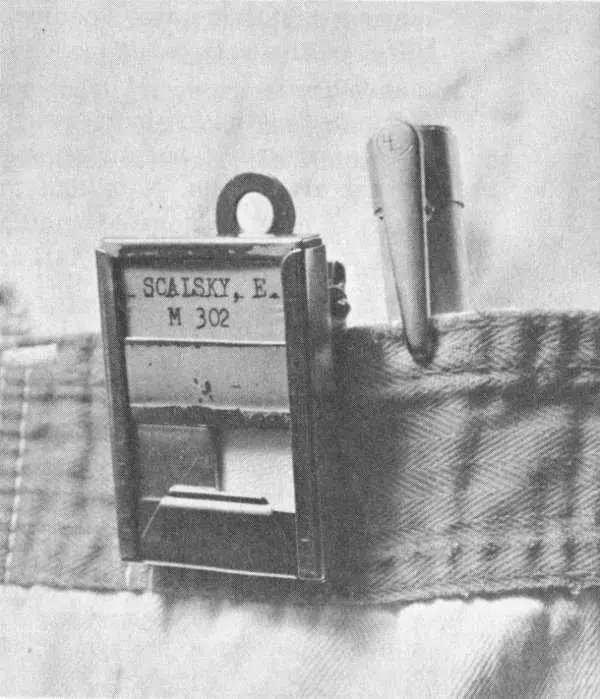Айзек Азимов - The Genetic Effects of Radiation
Здесь есть возможность читать онлайн «Айзек Азимов - The Genetic Effects of Radiation» весь текст электронной книги совершенно бесплатно (целиком полную версию без сокращений). В некоторых случаях можно слушать аудио, скачать через торрент в формате fb2 и присутствует краткое содержание. Год выпуска: 2018, Издательство: epubBooks Classics, Жанр: Медицина, Биология, на английском языке. Описание произведения, (предисловие) а так же отзывы посетителей доступны на портале библиотеки ЛибКат.
- Название:The Genetic Effects of Radiation
- Автор:
- Издательство:epubBooks Classics
- Жанр:
- Год:2018
- ISBN:нет данных
- Рейтинг книги:4 / 5. Голосов: 1
-
Избранное:Добавить в избранное
- Отзывы:
-
Ваша оценка:
- 80
- 1
- 2
- 3
- 4
- 5
The Genetic Effects of Radiation: краткое содержание, описание и аннотация
Предлагаем к чтению аннотацию, описание, краткое содержание или предисловие (зависит от того, что написал сам автор книги «The Genetic Effects of Radiation»). Если вы не нашли необходимую информацию о книге — напишите в комментариях, мы постараемся отыскать её.
The Genetic Effects of Radiation — читать онлайн бесплатно полную книгу (весь текст) целиком
Ниже представлен текст книги, разбитый по страницам. Система сохранения места последней прочитанной страницы, позволяет с удобством читать онлайн бесплатно книгу «The Genetic Effects of Radiation», без необходимости каждый раз заново искать на чём Вы остановились. Поставьте закладку, и сможете в любой момент перейти на страницу, на которой закончили чтение.
Интервал:
Закладка:
Since mice, like men, are mammals, results gained by such experiments are particularly significant. Mice are far closer to man in the scheme of life than is any other creature that has been studied genetically on a large scale, and their reactions (one might cautiously assume) are likely to be closer to those that would be found in man.
Almost at once, when the studies began, it turned out that mice were more susceptible to genetic damage than fruit flies were. The induced mutation rate per gene seems to be about fifteen times that found in Drosophila for comparable X ray doses. The only safe course for mankind then is to err, if it must, strongly on the side of conservatism. Once we have decided what might be safe on the basis of Drosophila studies, we ought then to tighten precautions several notches by remembering that we are very likely more vulnerable than fruit flies are.
Counteracting the depressing nature of this finding was that of a later, quite unexpected discovery. It was well established that in fruit flies and other simple organisms, it was the total dosage of absorbed radiation that counted and that whether this was delivered quickly or slowly did not matter.

Arrangement for long–term low–dose–rate irradiation of mice used for mutation–rate studies at Oak Ridge National Laboratory. The cages are arranged at equal distances from a cesium–137 gamma–ray source in the lead pot on the floor. The horizontal rod rotates the source.
This proved to be not so in the case of mice. In male mice, a radiation dose delivered at the rate of 0.009 rad per minute produced only from one–quarter to one–third as many mutations as did the same total dose delivered at 90 rads per minute.
In the male, cells in the gonads are constantly dividing to produce sex cells. The latter are produced by the billions. It might be, then, that at low radiation dose rates, a few of the gonad cells are damaged but that the undamaged ones produce a flood of sperm cells, “drowning out” the few produced by the damaged gonad cells. The same radiation dose delivered in a short time might, however, damage so many of the gonad cells as to make the damaged sex cells much more difficult to “flood out”.
A second possible explanation is that there is present within the cells themselves some process that tends to repair damage to the genes and to counteract mutations. It might be a slow–working, laborious process that could keep up with the damage inflicted at low dosage rates but not at high ones. High dosage rates might even damage the repair mechanism itself. That, too, would account for the fewer mutations at low dosage rates than at high ones.
To check which of the two possible explanations was nearer the truth, Russell performed similar tests on female mice. In the female mouse (or the female human being, for that matter) the egg cells have completed almost all their divisions before the female is born. There are only so many cells in the female gonads that can give rise to egg cells, and each one gives rise to only a single egg cell. There is no possibility of damaged egg cells being drowned out by floods of undamaged ones because there are no floods.
Yet it was found that in the female mouse the mutation rate also dropped when the radiation dose rate was decreased. In fact, it dropped even more drastically than was the case in the male mouse.
Apparently, then, there must be actual repair within the cell. There must be some chemical mechanism inside the cell capable of counteracting radiation damage to some extent. In the female mouse, the mutation rate drops very low as the radiation dose rate drops, so that it would seem that almost all mutations might be repaired, given enough time. In the male, the mutation rate drops only so far and no farther, so that some mutations (about one–third is the best estimate so far) cannot be repaired.
If this is also true in the human being (and it is at least reasonably likely that it is), then the greater vulnerability of our genes as compared with those of fruit flies is at least partially made up for by our greater ability to repair the damage.
This opens a door for the future, too. The workings of the gene–repair mechanism ought (it is to be hoped) eventually to be puzzled out. When it is, methods may be discovered for reinforcing that mechanism, speeding it, and increasing its effectiveness. We may then find ourselves no longer completely helpless in the face of genetic damage, or even of radiation sickness.
On the other hand, it is only fair to point out that the foregoing appraisal may be an over–optimistic view. Russell’s experiments involved just 7 genes and it is possible that these are not representative of the thousands that exist altogether. While the work done so far is most suggestive and interesting, much research remains to be carried out.
If, then, we cannot help hoping that natural devices for counteracting radiation damage may be developed in the future, we must, for the present, remain rigidly cautious.
Conclusion
It is unrealistic to suppose that all sources of man–made radiation should be abolished. The good they do now, the greater good they will do in the future, cannot be abandoned. It is, however, reasonable to expect that the present Nuclear Test Ban Treaty will continue and that nations, such as France and China, which have nuclear capabilities but are not signatories of the Treaty will eventually sign. It is also reasonable to expect that X ray diagnosis and therapy will be carried on with the greatest circumspection, and that the use of radiation in industry and research will be carried on with great care and with the use of ample shielding.

A film badge (left) and a personal radiation monitor (right) record the amount of radiation absorbed by the wearer. These safety devices, worn by persons working in radiation environments, are designed to keep a constant check on each individual’s absorbed dose and to prevent overexposure.
As long as man–made radiation exists, there will be some absorption of it by human beings. The advantages of its use in our modern society are such that we must be prepared to pay some price. This is not a matter of callousness. We have come to depend a great deal for comfort and even for extended life, upon the achievements of our technology, and any serious crippling of that technology will cost us lives. An attempt must be made to balance the values of radiation against its dangers; we must balance lives against lives. This involves hard judgments.
Those working under conditions of greatest radiation risk—in atomic research, in industrial plants using isotopes, and so on—can be allowed to set relatively high limits for total radiation dosages and dose rates that they may absorb (with time) with reasonable safety, but such rates will never do for the population generally. A relative few can voluntarily endure risks, both somatic and genetic, that we cannot sanely expect of mankind as a whole. [9] Nevertheless, it should be pointed out that the precautions taken in the atomic energy industry are such that absorption of radiation is not as severe a problem as one might suspect. Fully 95% of those engaged in this work receive less than 1 rem a year. Only 1% receive more than 5 rems.
From fruit fly experiments it would seem that a total exposure of 30 to 100 rads of radiation will double the spontaneous mutation rate. So much radiation and such a doubling of the rate would be considered intolerable for humanity.
Читать дальшеИнтервал:
Закладка:
Похожие книги на «The Genetic Effects of Radiation»
Представляем Вашему вниманию похожие книги на «The Genetic Effects of Radiation» списком для выбора. Мы отобрали схожую по названию и смыслу литературу в надежде предоставить читателям больше вариантов отыскать новые, интересные, ещё непрочитанные произведения.
Обсуждение, отзывы о книге «The Genetic Effects of Radiation» и просто собственные мнения читателей. Оставьте ваши комментарии, напишите, что Вы думаете о произведении, его смысле или главных героях. Укажите что конкретно понравилось, а что нет, и почему Вы так считаете.








![Айзек Азимов - Земля Ханаанская. Родина иудаизма и христианства[The Land of Canaan]](/books/172206/ajzek-azimov-zemlya-hanaanskaya-rodina-iudaizma-i-h-thumb.webp)



